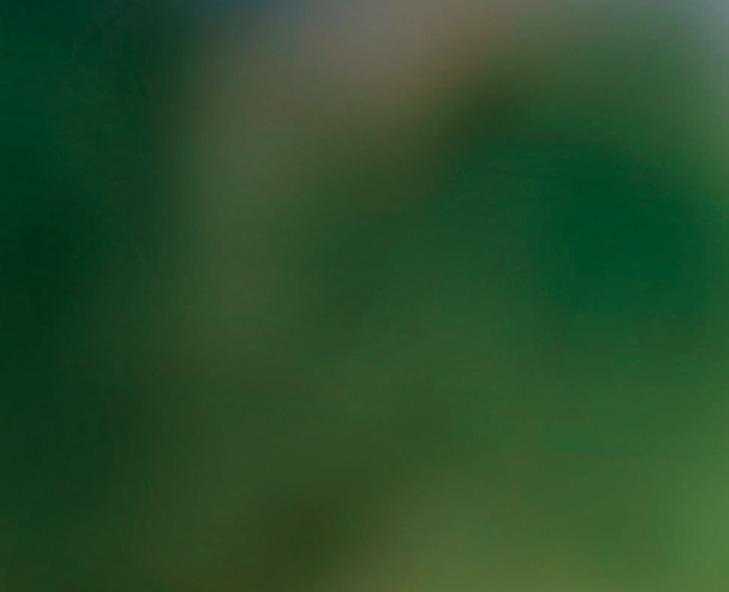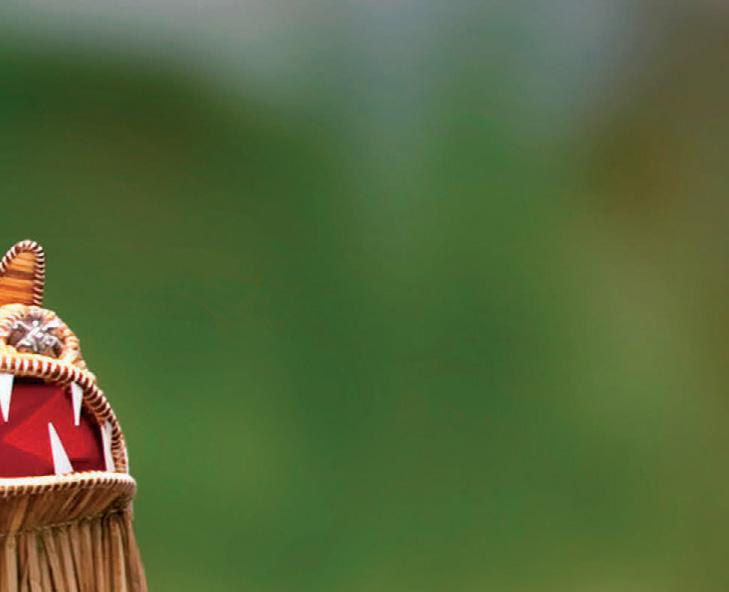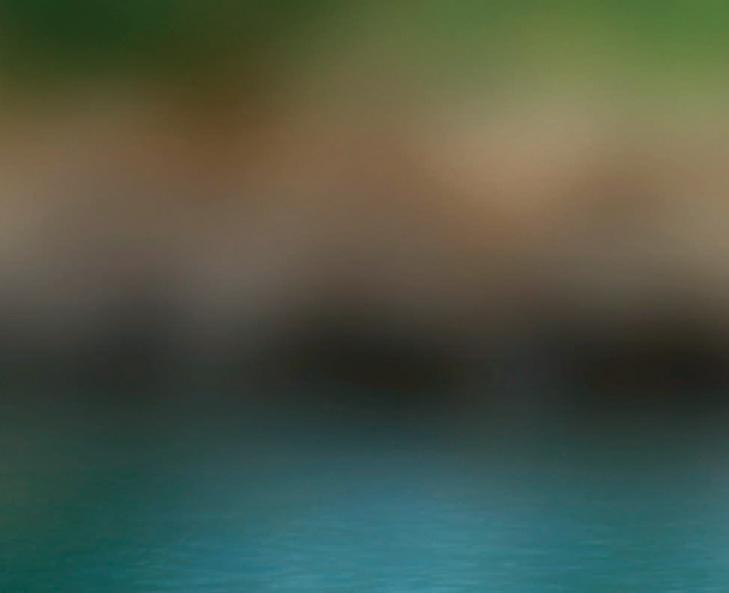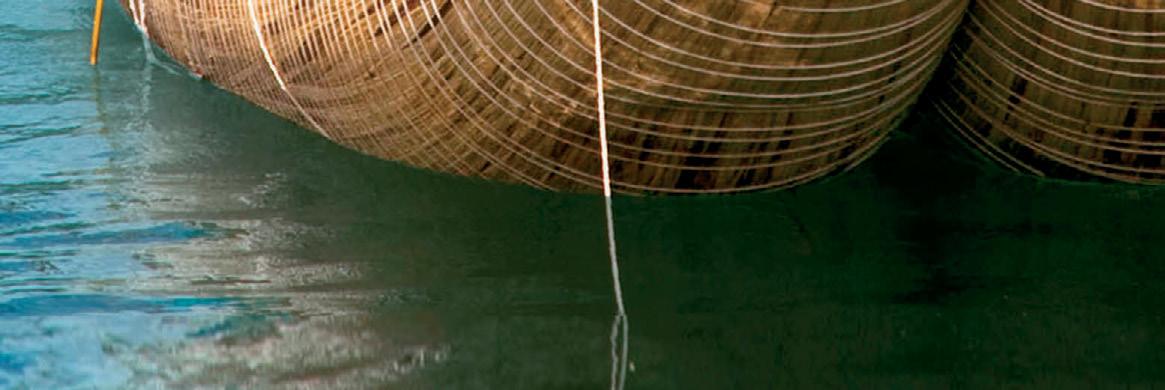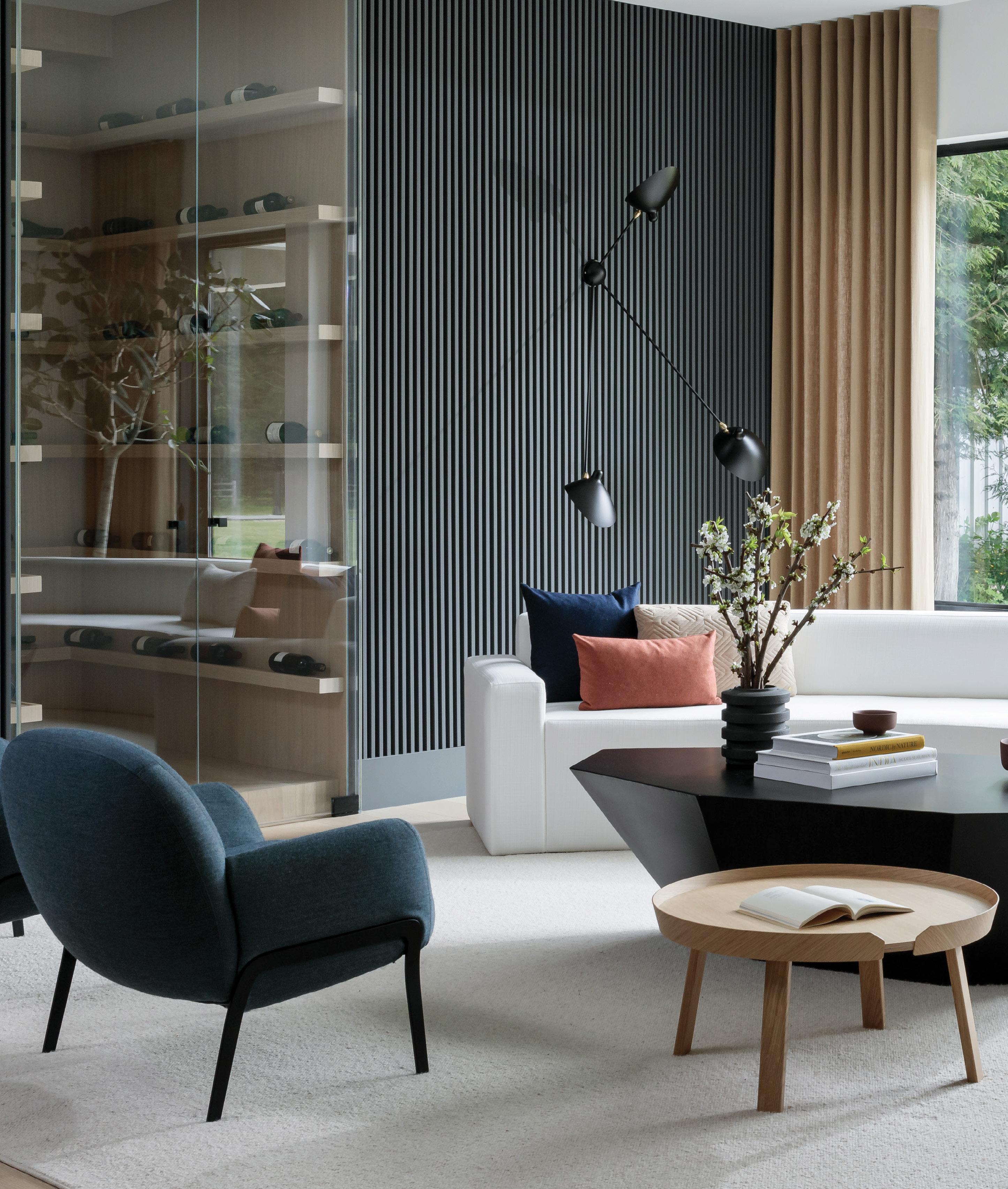
13 minute read
Jewel box
The curved sofa was custom designed by PlaidFox and made locally. The faceted coffee table is from Noir, made of powdercoated stainless steel. The second coffee table is from Muuto, the Roly Poly black chair is from Driade and the Kashan 70 chair by Bernhardt Design
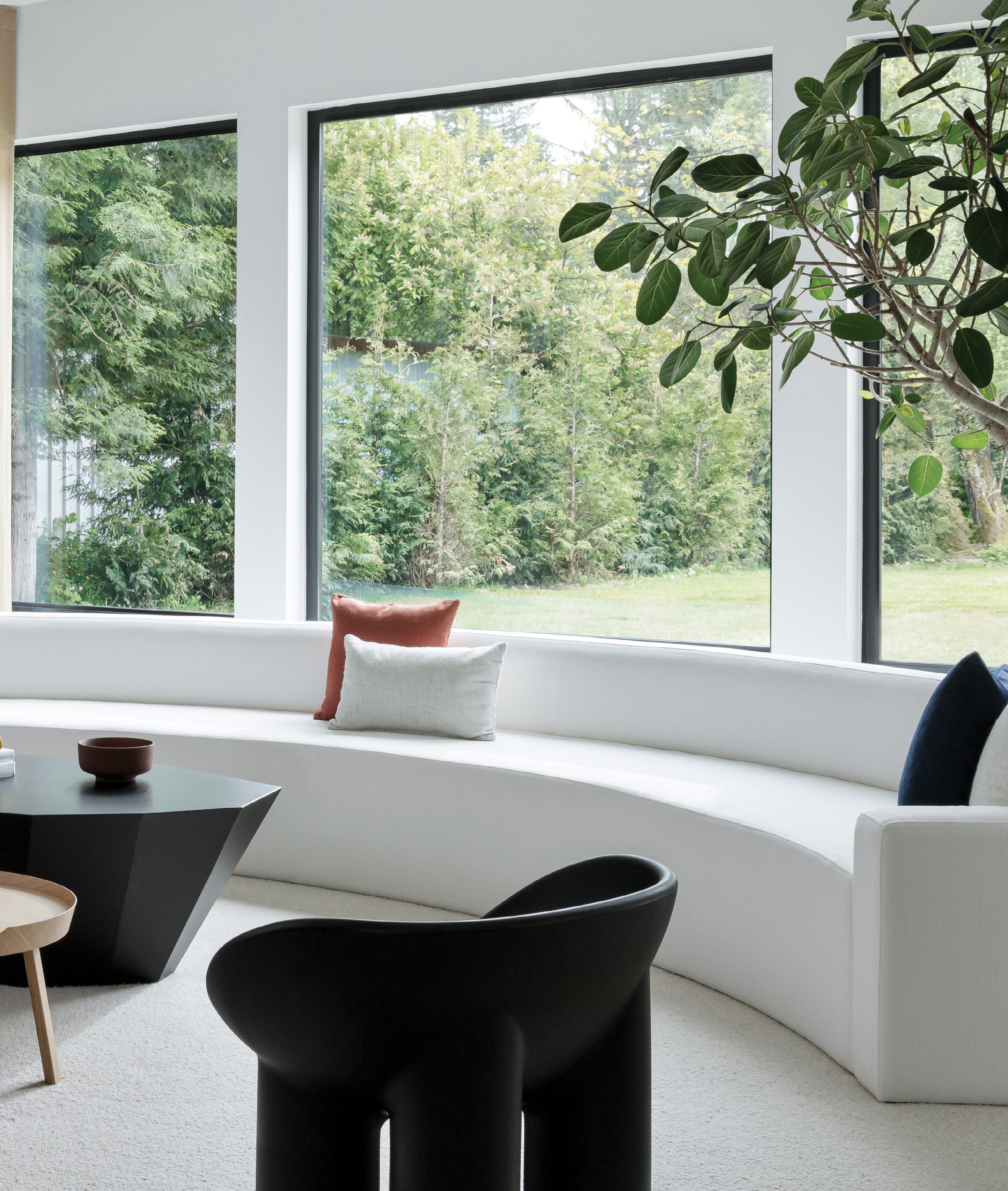
Outside downtown Vancouver, on the west coast of Canada, this house surrounded by trees offers unexpected moments inside
The grey coffee table in Carrara marble is by RH. The Button light fixture by The Dot is from Visual Comfort, while the Camel saddle chair is from Inform Interiors
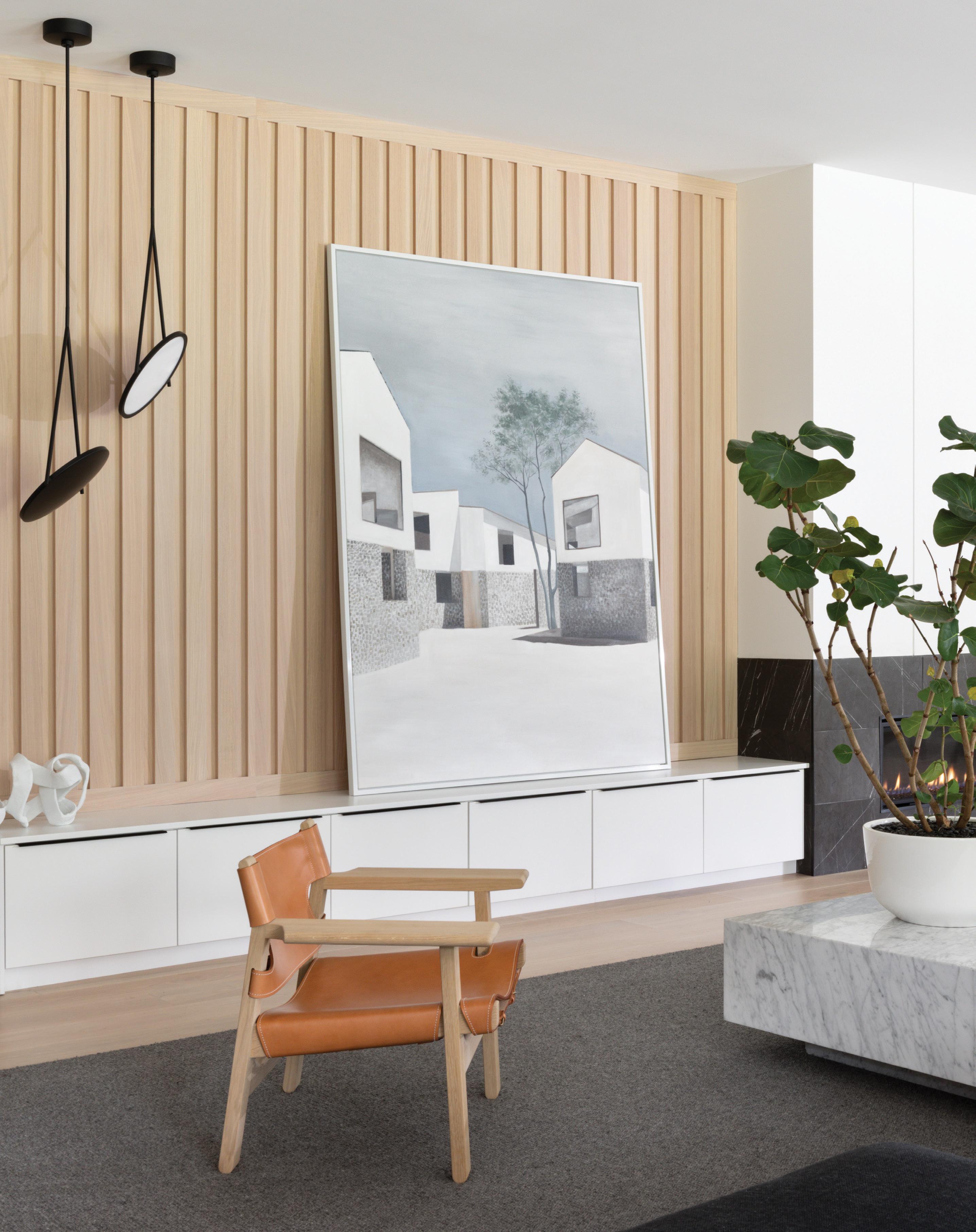

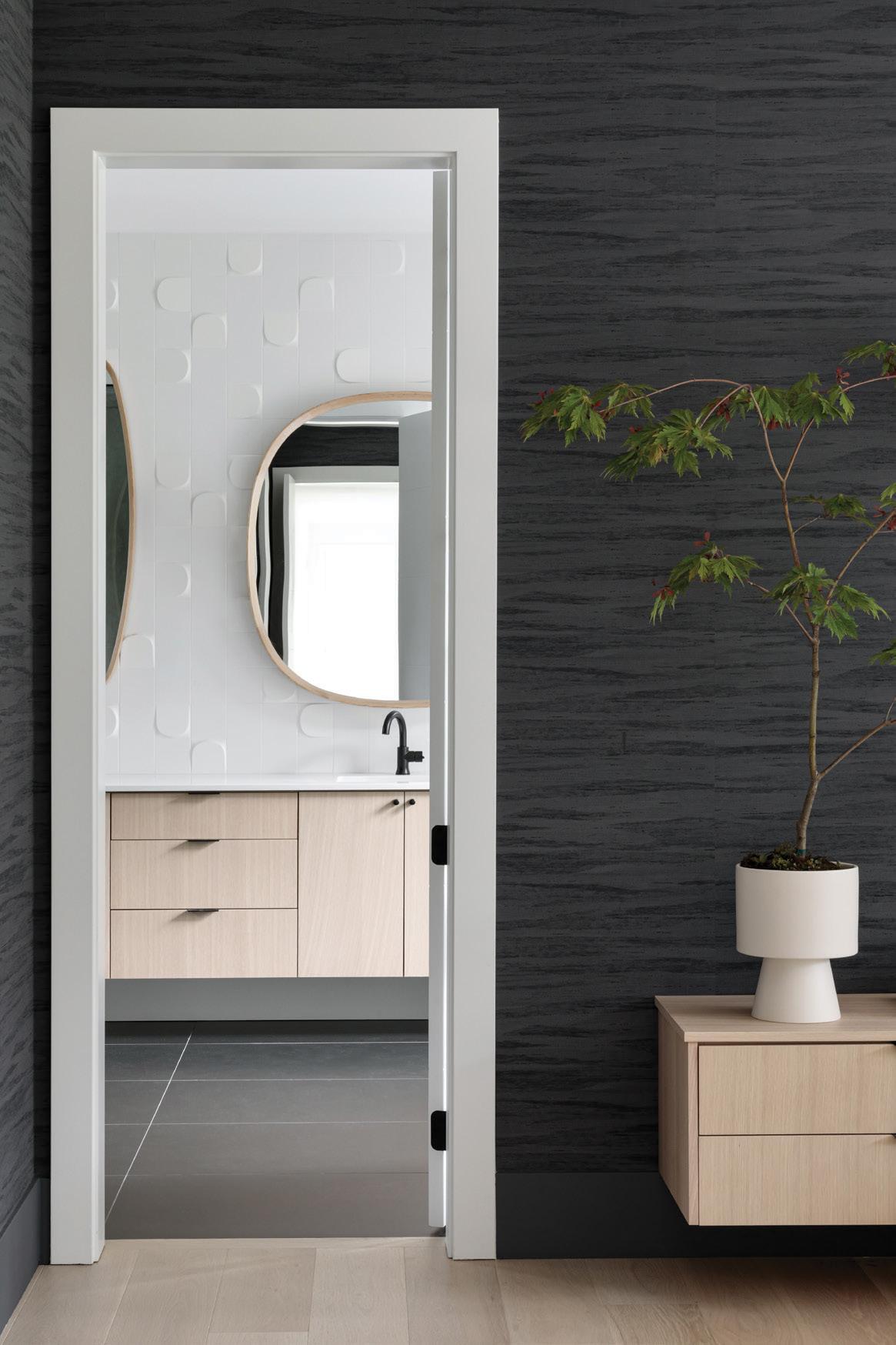
This page, from left: The tri-leg custom desk was made from Avocados Marble and custom-designed by the PlaidFox team. The chair is from CB2. The room has been painted in the shade Black Beauty by Benjamin Moore. The chair in the corner is by Bernhardt Design, upholstered in cobalt blue mohair. In the bathroom, the white tiles are from Tierra Sol Everything started on a plane, while flying back from Mexico to Canada after a family holiday trip. Sarika (one of the homeowners, who lives with her husband and their two children) and Ben Leavitt (co-founder of design studio PlaidFox, and who happens to be Sarika’s brother-in-law) started to draw up the living room concept for this house on a paper napkin. The rest is history.
Despite its site of over 740 square metres, the house – situated in Vancouver, Canada – feels warm and inviting. Organised across two floors, it comprises an open-plan main floor, as well as six bedrooms and eight bathrooms. With such a large space, one of the main challenges was finding the best way to visually delimitate the different areas without using walls. Colours helped achieve this; neutral and earthy tones were mostly used, as requested by the homeowner, but some bright touches were introduced to bring some energy and a sense of youthfulness throughout.
In this project, not everything was planned – on the contrary, there was some room for new ideas along the way, such as the decision to adorn part of the dining room with some pink. Instead of having a specific aesthetic in mind at the beginning of the process, Leavitt explored several possibilities during the different phases through materials, colours, textures and shapes.
“With a large and modern home, in order to create depth and warmth, you want to use natural textures layered with high and low pile to make the house feel cosy,” says the designer. “Our goal was to treat each room as a separate jewel box. And while the home’s architecture is open-concept in nature, the individual spaces feel distinct, but remain connected.”
In the living room, edgy, curvaceous and faceted furniture prevails. Occupying the centre of the home and connecting several common areas, the dining room is streamlined and minimal, with a modern floating staircase made of glass in the background, overlooking the Japanese-inspired garden. The kitchen was painted in a smoky dark blue for a chic look and easy maintenance; the expansive family room also serves for large gatherings and the playful breakfast nook is the children’s favourite space.
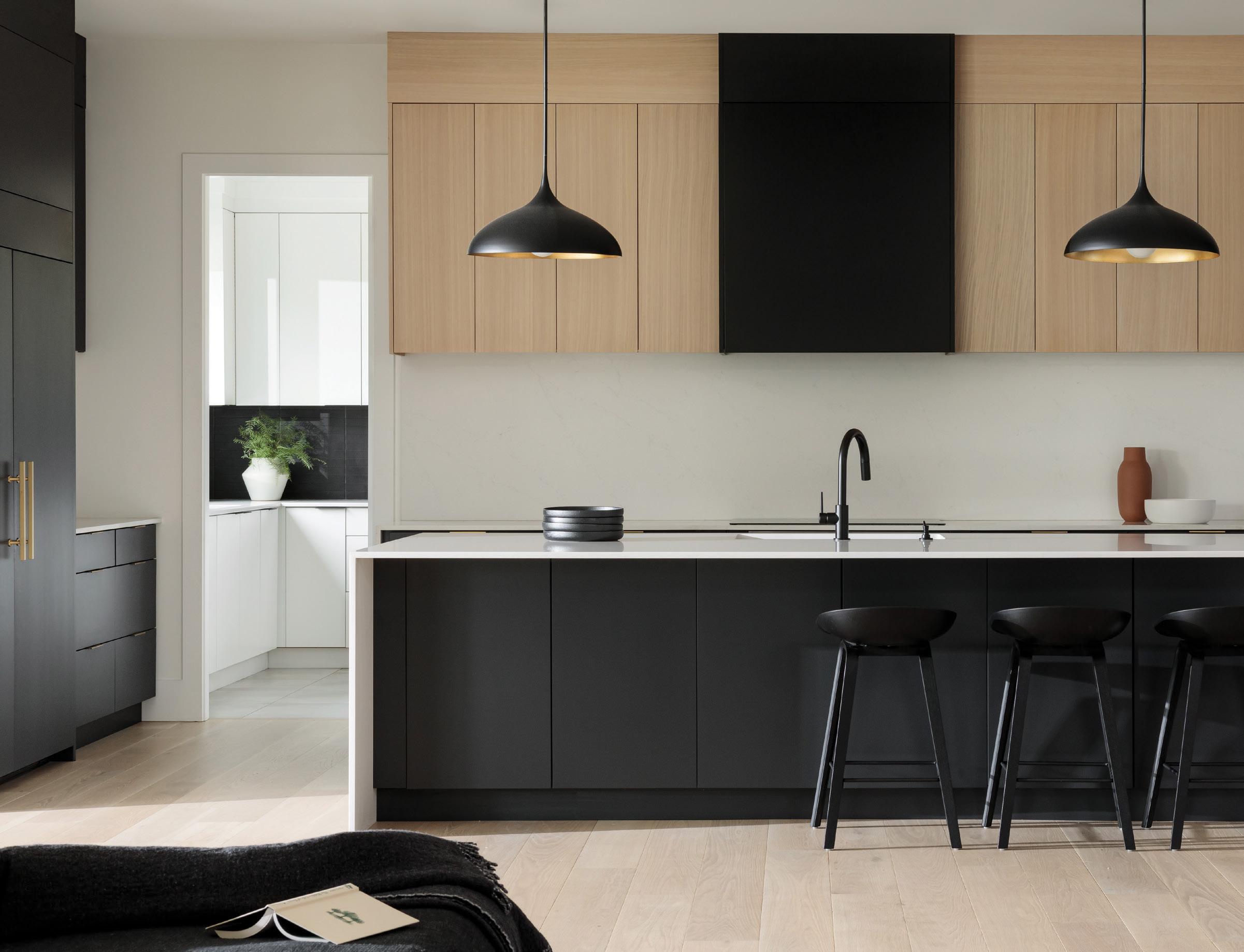
“This home is a youthful fusion of a modern artistic approach to design and functional family living,” says Leavitt. Danish design and some sleek elements of what can be seen in Montreal guided him. “Within Canada, I find Montreal and Vancouver are two cities that really interpret modern in a liveable way,” adds Leavitt.
A Scandinavian influence, by way of pieces by HAY, Normann Copenhagen and Muuto, dialogues with creations by Kelly Wearstler, Bernhardt Modern and Phillip Jeffries, among other designers.
In the living room, the custom-made, commissioned artwork ‘Hold On Let Me Overthink This’ was a gift from Leavitt to Sarika, as a reminder that design has to be fun – something they both experimented with during this project. Sarika doubted every suggestion made by Leavitt before always coming back to his original ideas – though only after overthinking for hours or even days.
“I don’t think the house takes itself too seriously,” says the designer. “I wanted elements of whimsy in each space, whether that’s the Mutina tile in the wet bar or the Lambert & Fils Parc light fixture, which is a nod to the woods and looks a bit like a flashlight.”
Other originalities include the sculpture made of stacked ceramics in the breakfast nook, the sole white chair among the black seats in the dining area, and the tiger artwork in the main bedroom.
“We wanted the house to be fresh-looking and inventive, but also classic and minimal,” concludes Leavitt, who clearly achieved the goal. id
This page: The kitchen features lights by Circa Lighting, from Visual Comfort, HAY bar stools and counters by Caesarstone. Opposite page: The table is by RH, while the Knot dining chairs are by Norman Copenhagen. The light fixture is by Kelly Wearstler
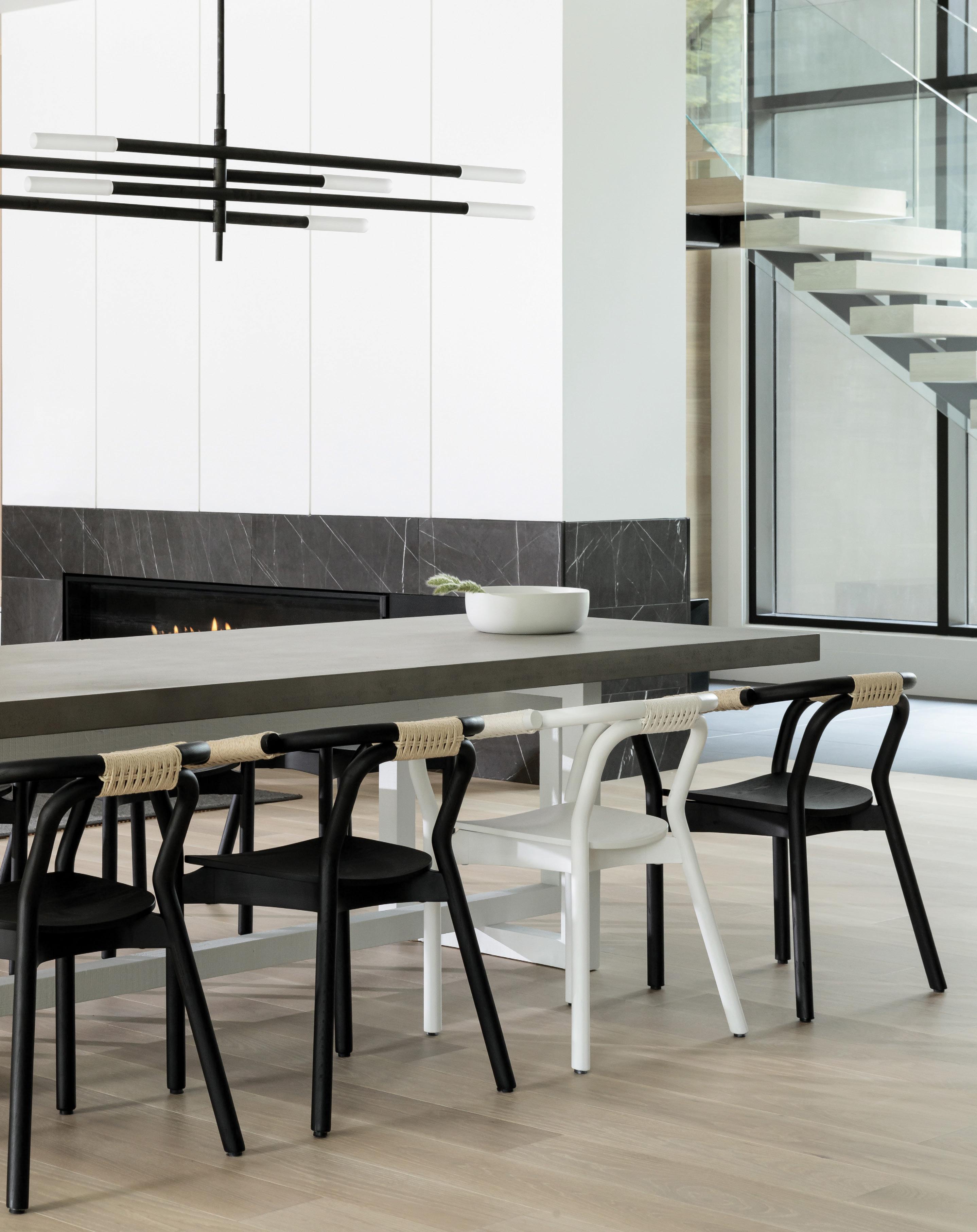
Luxury lifestyle
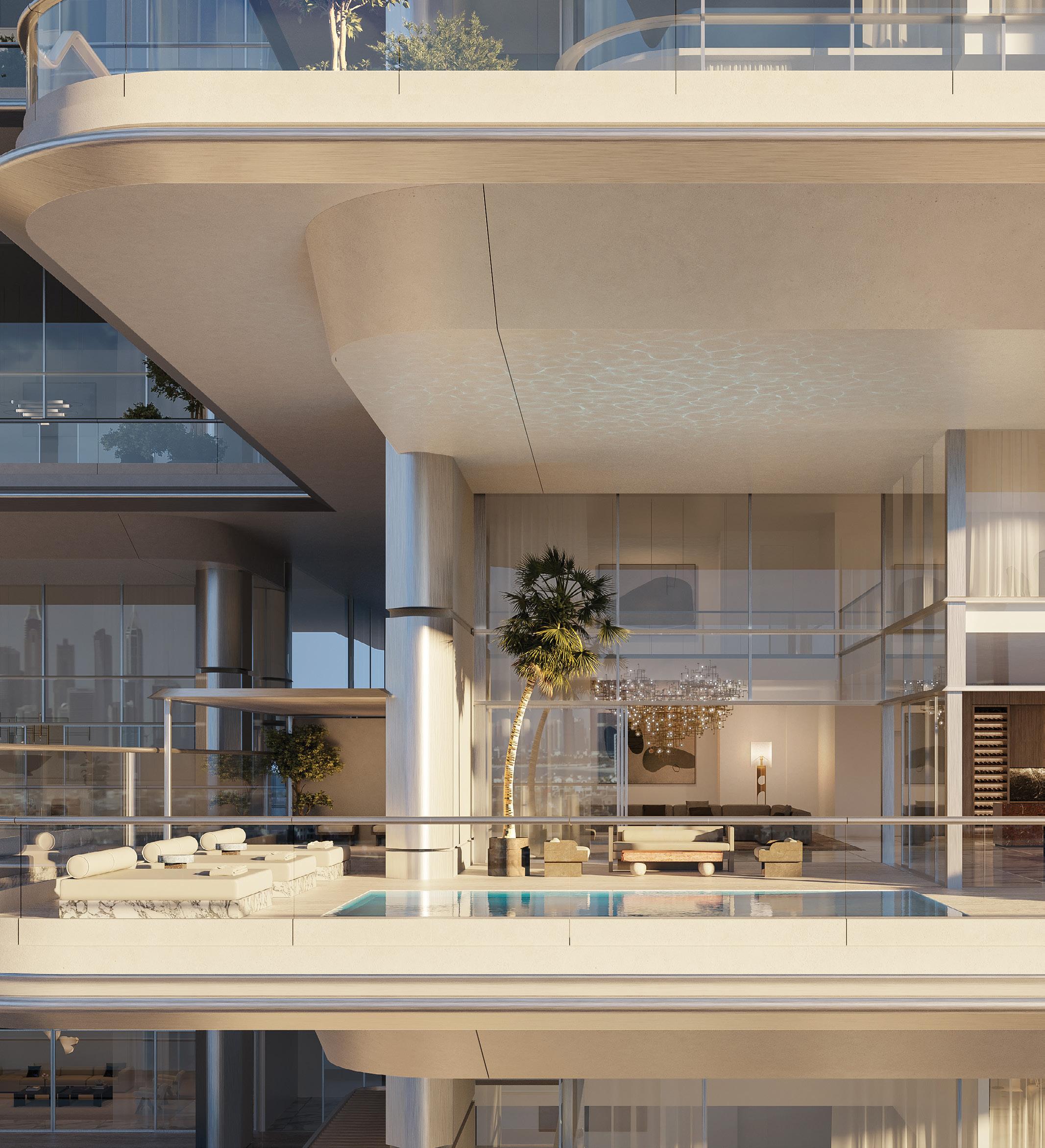
OMNIYAT’s latest development – ORLA, Dorchester Collection, Dubai, designed by Foster + Partners – rethinks wellness in modern living
Luxury real estate developer OMNIYAT is no stranger to introducing iconic buildings to the Dubai market – or to its famed skyline. Having worked with some of the world’s most well-known architects, interior and landscape designers and engineers – such as Dame Zaha Hadid for The Opus – the developer has tapped Foster + Partners for the second time, to design ORLA, Dorchester Collection, Dubai, bringing its first resortstyle residential development to the city.
Situated at the apex of Palm Jumeirah’s crescent, ORLA is positioned on a 29,000-square metre private beachfront, with uninterrupted 270-degree views stretching from Dubai’s skyline to the waters of the Arabian Gulf. The luxury property features 86 two- to four-bedroom residences, three sky palaces and one of the largest mansions on the Palm – and the first in its portfolio. Each residence is adorned with its own grand terrace and double-height ceilings of up to six metres and decked with European appliances.
“We always want to bring something new to the city,” begins Mahdi Amjad, founder and executive chairman of OMNIYAT. “We don’t want to repeat ourselves and we don’t want to repeat the work that is already out there; and that becomes increasingly more difficult the more we do. But we love the challenge. It’s what keeps us going and pushes us to collaborate with amazing designers and architects.”
After launching OMNIYAT in 2005, Amjad was clear in his statements that his focus was on quality at the highest standards of living. As a boutique developer focusing on high-end luxury, he instead set his sights on creating the most elevated experiences within innovative and memorable buildings that have been conceived by the greatest minds in design. This led to the tremendous collaboration with Dame Zaha Hadid. “The design knowledge I gained working with Zaha for 10 years changed everything about the way I look at design,” Amjad shares.
In the case of the Foster + Partners-designed ORLA, nature plays a vital role in informing the design, which combines a seamless indoor-outdoor living experience set across three individual ‘towers’. The architecture is conceptualised through the lens of natural elements – which also informs its curved terraces that give it an amorphic effect – resulting in the integration of flowing water features and lush greenery to erase boundaries and allow a positive flow of energy across the property. These individual terraces feature swimming pools that are flush with the floor and provide uninterrupted views of the sea and the city. The Sky Palaces (distinct from the ‘Super Penthouses’) have their own private arrival experience, with the aim of bringing a palatial feel to modern living, and feature their own lobby, reception and elevator that opens to the residence, as well as a 12-metre foyer with a 35-metre rooftop infinity pool. It was recently revealed that one of the Sky Palaces will be the largest penthouse in the region at 50,000 square feet [4,645 m2]. ORLA is also the fourth OMNIYAT development in Dubai to be managed by Dorchester Collection. It features world-class amenities, including: a private, resident-only 300-square metre beach club; a large temperature-controlled outdoor infinity pool; a private cinema; a state-of-the-art fitness centre; a business centre with two meeting rooms, a boardroom and a multi-functional events space; and library and cigar lounges.
While the amenities reflect OMNIYAT’s commitment to luxury wellness, the company has also been working with institutions around the world to redefine the way developers integrate well-being into their projects, from considering air quality to incorporating water purification.
“We are taking the über-luxury and high quality that one would expect from an OMNIYAT development and translating that into an even more tranquil and serene lifestyle,” Amjad concludes.
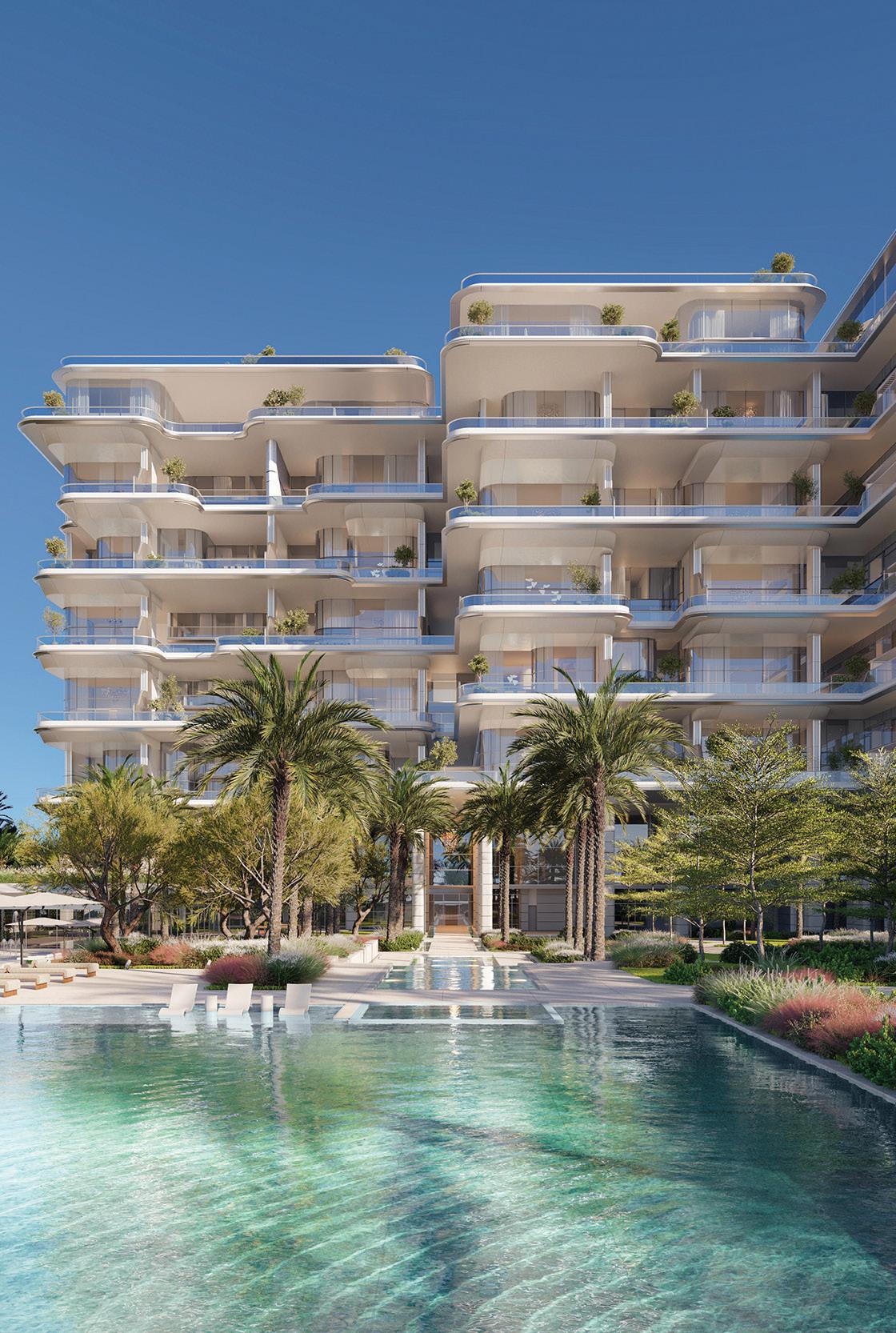
Art attack
This month's mood board is for the art lovers: we have curated a selection of objects inspired by art - be it bold prints, graphic elements or sculptural forms - which could easily double as perfect festive season gifts
Byredo Holiday Collection Byredo x Laila Gohar Available in stores and at byredo.com

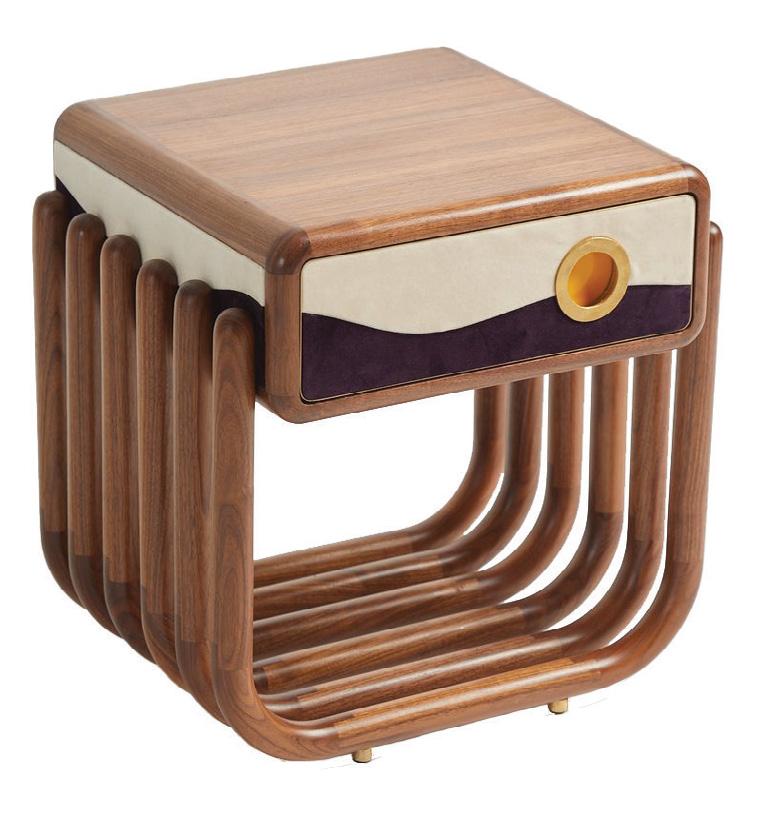
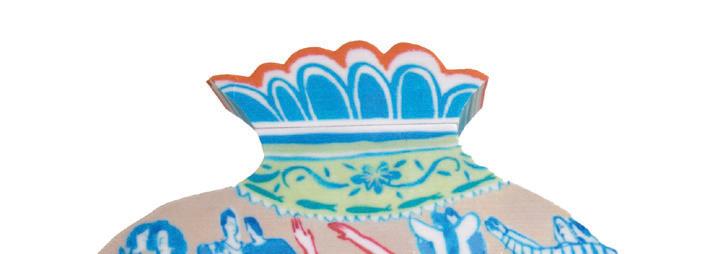
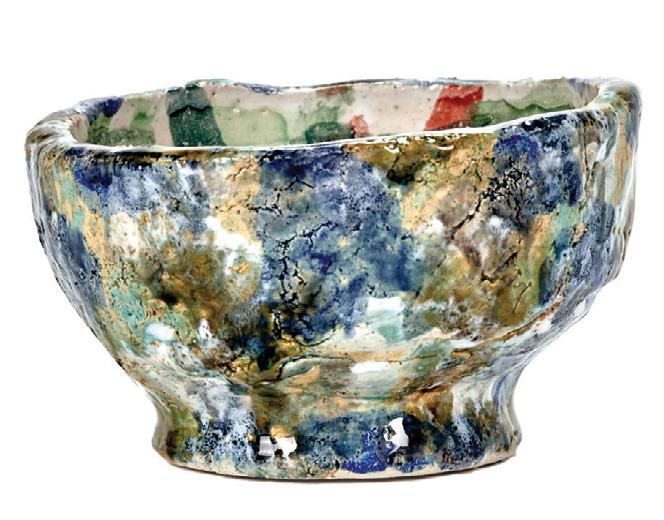

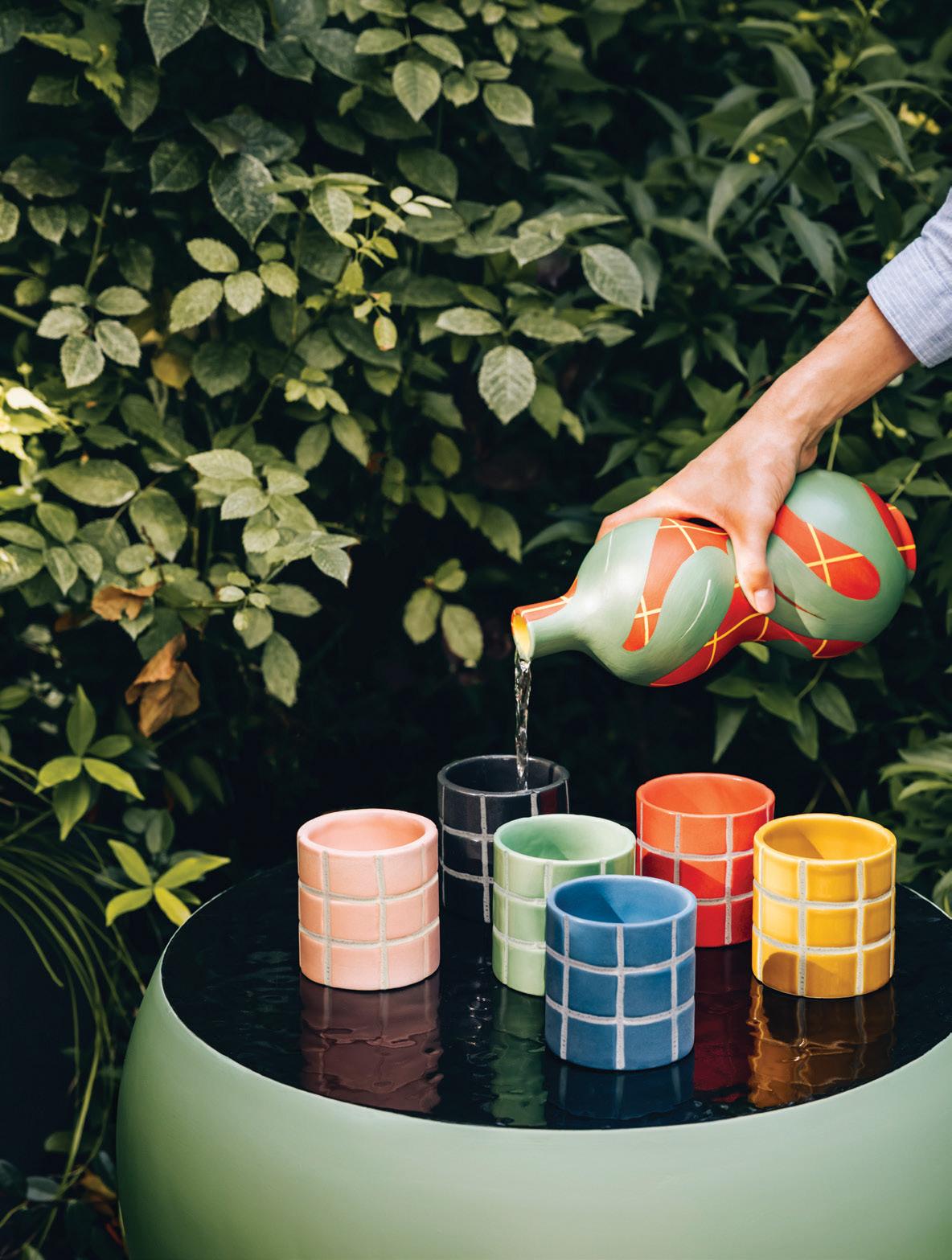
2
1
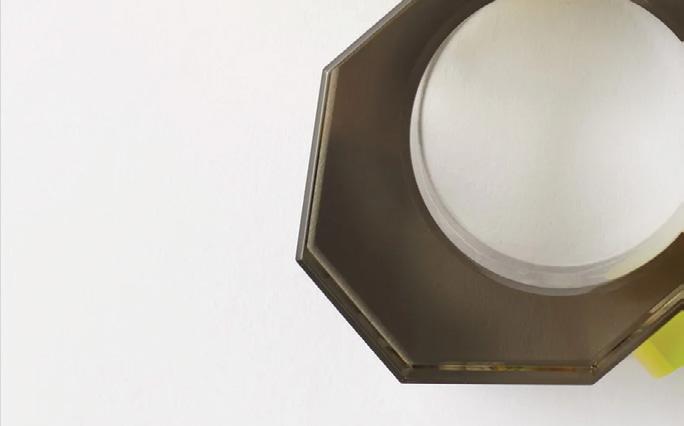
3
5
4
4
1. Shelby crystal napkin rings by Reflections Copenhagen. Available atmatchesfashion.com 2. Pomegranate vase by Unique Board. Available at shop. artjameel.org 3. Jasmine bedside table by Stéphanie Moussallem. Available at houseoftoday.com 4. Carré cup by Studio Maison Matisse. Available at maison-matisse.com 5. Pleated tote by Write Sketch &. Available at shop.artjameel.org 6. Chuva bowl by Serax. Available at comptoir102.com
An advocate of art
Through her work, Indian-born and -based artist Navjot Altaf sheds light on some of the most challenging issues of our time
WORDS BY KARINE MONIÉ
The impact of art can be as narrow or as wide-ranging as the artist’s intent. Some creative minds choose to focus on beauty and emotion while others are interested in the process of exploring and innovating. Some want to provoke, while others invite viewers to find inner peace. When looking at Navjot Altaf’s work, it is obvious that raising awareness of important topics such as feminism, climate change and social justice — among others — is key.
Born in 1949 in the city of Meerut, in the Indian state of Uttar Pradesh, around 80 kilometres northeast of New Delhi, Altaf studied fine and applied arts in Mumbai, where she currently lives and works. She also spends time in Bastar, a district in Central India, where she co-founded DIAA (Dialogue Interactive Artists Association) with Rajkumar Korram, Shantibai and Gessuram Viswakarma.
Collaboration is at the heart of everything Altaf does, and her new, two-volume book titled Navjot At Work and Artist’s Notes, published by Archive Books in association with The Guild Art Gallery, perfectly showcases this approach. The launch of the book coincides with the artist’s first solo exhibition in the Arabian Peninsula, which is titled ‘Navjot Altaf: Pattern’ and being presented by Ishara Art Foundation in Dubai until 9 December 2022.
“Navjot is a feminist and has great belief in the intrinsic values of equality and non-discrimination against minorities,” says Smita Prabhakar, founder and chairperson of Ishara Art Foundation. “Her work with tribal people in the Bastar region in Central India and [her] focus on sustainability are at the forefront of discussions in the world today.”
Through five decades, Altaf has been expressing her creativity and concerns by using a variety of disciplines, including painting, photography, sculpture, installation, video and site-specific works. By collaborating with indigenous communities who witness deforestation, mining, pollution and displacement, Altaf has become a leading voice for social change, an artist-activist who advocates for justice.
This book offers the opportunity to better understand how Altaf generates dialogues on craft and contemporary art, and how she deals with anthropology, aesthetics, ethics and politics, with art as her channel for expression.
As written by Geeta Kapur in the introductory text of the book, “Navjot’s aspiration is to democratise the regime of the aesthetic to which she determinedly belongs and from which position she seeks an agential role. Understanding the distributive requirements of subjectivity, she contributes to the potential immanent in community life.”
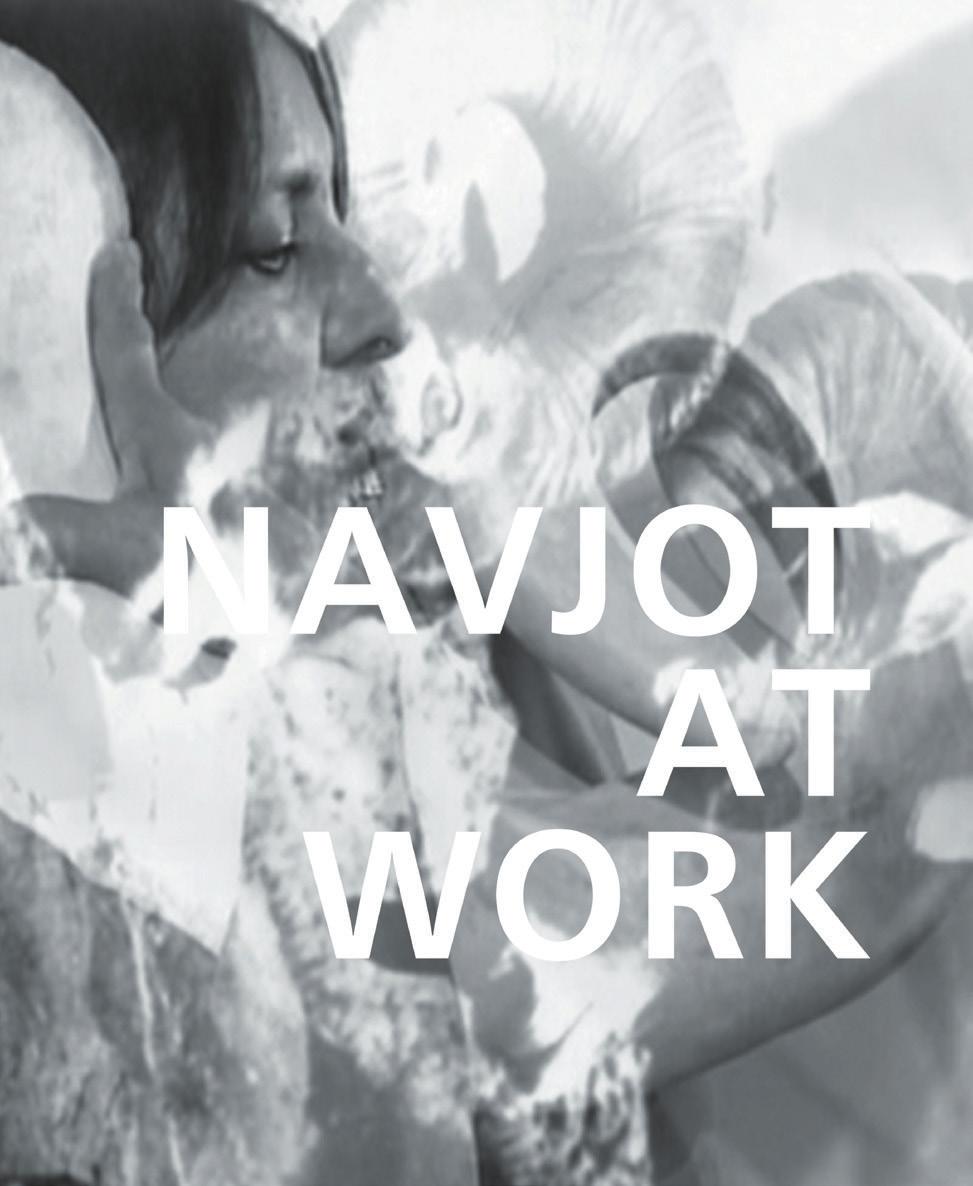

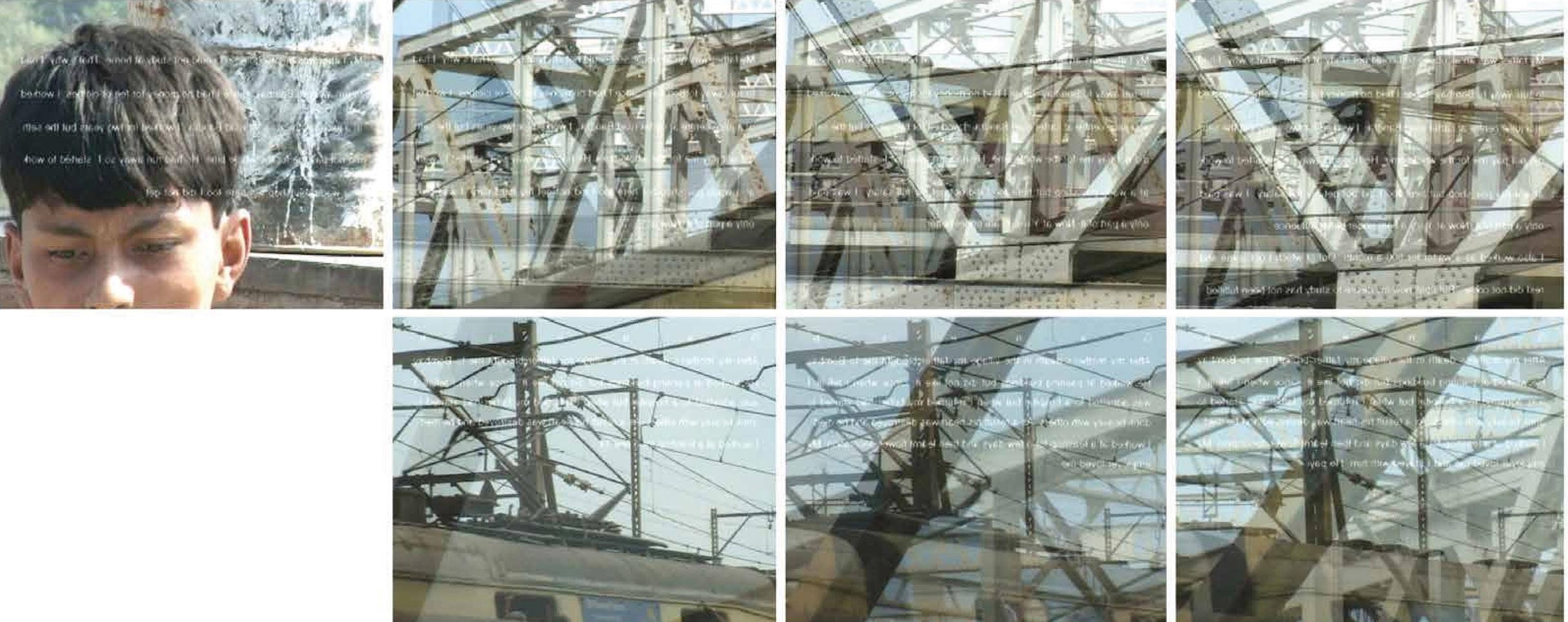
From top: Touch I II III, Remembering Altaf, 3-channel video projection, Rose Art Museum, Brandeis University, Boston, 2007-2008. Images from ‘Navjot At Work’ by The Guild Art Gallery, Mumbai
Pierre Charpin’s lifestyle collection for Saint-Louise is a wide-ranging assemblage of 29 pieces, from tableware and lighting to barware and decoration – all crafted in clear crystal that has been engraved with horizontally and vertically cut lines. These drawn lines are an interpretation of the brand’s ‘gestural vocabulary’ that has been passed down through generations, paying tribute to Saint-Louise’s artisans. Some of the most intricate pieces in the collection are the crystal lamp shades that are internally sandblasted, giving the material a matte-frosted appearance while allowing light to pass through.
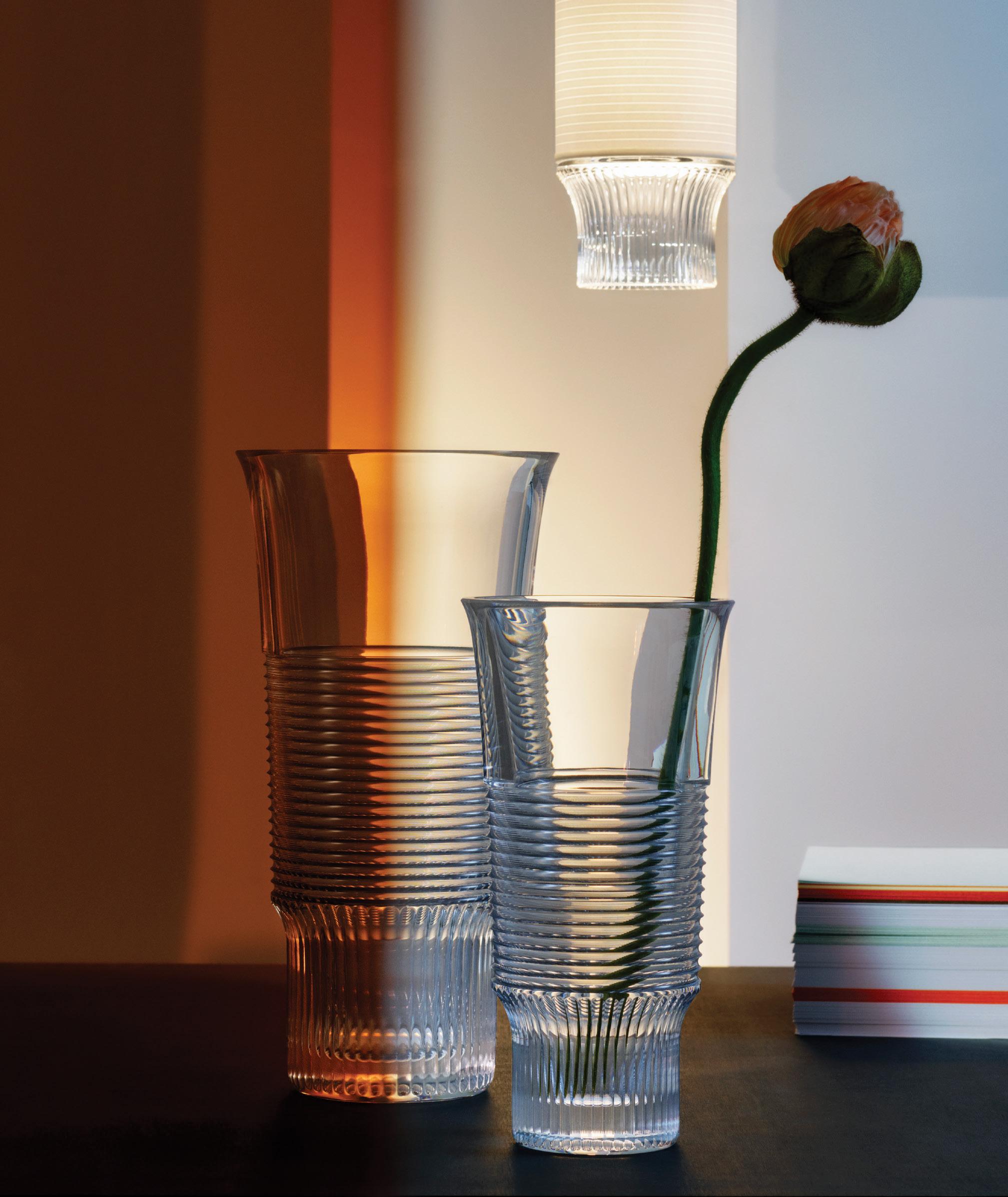
Photography by Maxime Tetard
Cadence by Pierre Charpin for Saint-Louis








